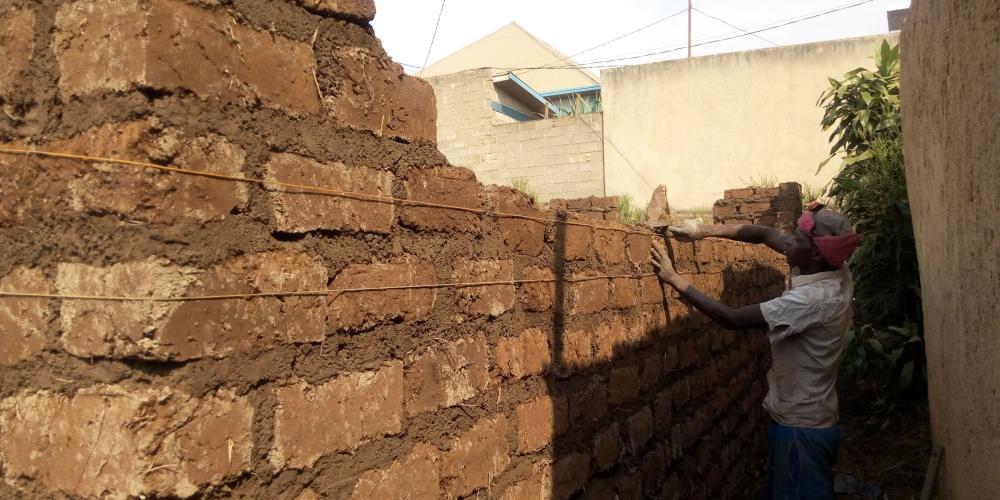Africa-Press – Rwanda. Rwanda Housing Authority (RHA) released new guidelines in 2022 for the use of adobe (mud) bricks, commonly known as Rukarakara, with the aim of improving their standards and preventing disasters in the housing sector.
However, according to a recent warning from the City of Kigali, some housing project owners are violating these guidelines. Below are 10 key things you need to know about the mud brick use guidelines:
1. Size of area allowed for mud bricks
Rukarakara, or mud bricks, are permitted for constructing residential houses without floors and basements, located on areas not exceeding 200 square meters in residential zones based on the master plans for both rural and urban areas.
The guidelines also specify that districts or the City of Kigali can identify areas where Rukarakara bricks are not allowed for residential house construction.
2. Areas prohibited for houses made of mud bricks
Houses made of mud bricks must not be built in areas prone to accidents, such as sloping and unstable zones which are susceptible to landslides.
In addition, such houses should not be located near lakes, rivers, or areas likely to experience floods or severe erosion. They are also prohibited near water reservoirs, swamps, or areas designated for waste disposal, including landfills and dumps.
The houses with mud bricks cannot be built in unstable locations, such as former mining sites or areas with quarrying activities, or on excessive slopes of 40% or greater. Houses cannot be constructed below or above a slope without a well-built and strong retaining wall that starts at the land surface.
3. Commercial buildings, churches, and mosques not allowed
Commercial buildings, churches, and mosques are not allowed to be constructed using Rukarakara bricks, be it in rural or urban areas.
4. Request for permits
According to the guidelines, districts in Kigali can determine areas where Rukarakara bricks are prohibited for residential construction.
Anyone wishing to use these bricks must apply for a construction permit. Construction permits are issued by sectors in rural areas and by One-Stop Centres in districts located in cities.
5. Exception in case of renovation
When renovating houses, only those that were previously constructed with Rukarakara bricks are allowed to use these bricks for renovation.
6. Standards for Rukarakara bricks
The recommended standards for Rukarakara bricks consist of height between 20 and 30 centimetres, width between 20 and 25 centimetres, and vertical length of between 10 and 15 centimetres.
Every house constructed with Rukarakara bricks must have a strong foundation of stones built with cement and sand, according to the rules.
The foundation must also be at least 40 centimetres deep and 20 centimetres high above the land surface.
For brick manufacturing, only clay and laterite soils mixed with other materials are permitted.
7. Mandatory builders’ associations
The new guidelines require all builders to be grouped in associations to help improve and regulate the construction of residential houses made with Rukarakara bricks.
8. Proof of skills
Builders must provide proof of training in building with mud bricks. Builders’ associations must sign agreements with districts.
Every builder must be a member of an association and carry a card showing they have been trained.
No builder will be allowed to construct a residential house using Rukarakara bricks without proof of training and membership in a builders’ association.
The housing authority also requires monthly reports on the number of houses constructed using these mud bricks.
9. Rehabilitating adobe extraction sites
According to the guidelines, local government institutions must monitor areas where soil for mud bricks is extracted to prevent environmental degradation.
Extraction sites must also be rehabilitated in accordance with the guidelines.
10. Benefits to landowners
The housing authority authorized the use of mud bricks to facilitate homeownership, especially for low-income earners.
Rwanda needs 5.5 million housing units by 2050, up from 2.5 million in 2019, to accommodate an estimated 22 million people. This requires building at least 150,000 housing units every year to meet demand.
A recent study showed that the City of Kigali needs 310,000 new housing units by 2032, or approximately 20,700 affordable housing units annually. However, fewer than 1,000 housing units are delivered each year.
For More News And Analysis About Rwanda Follow Africa-Press






